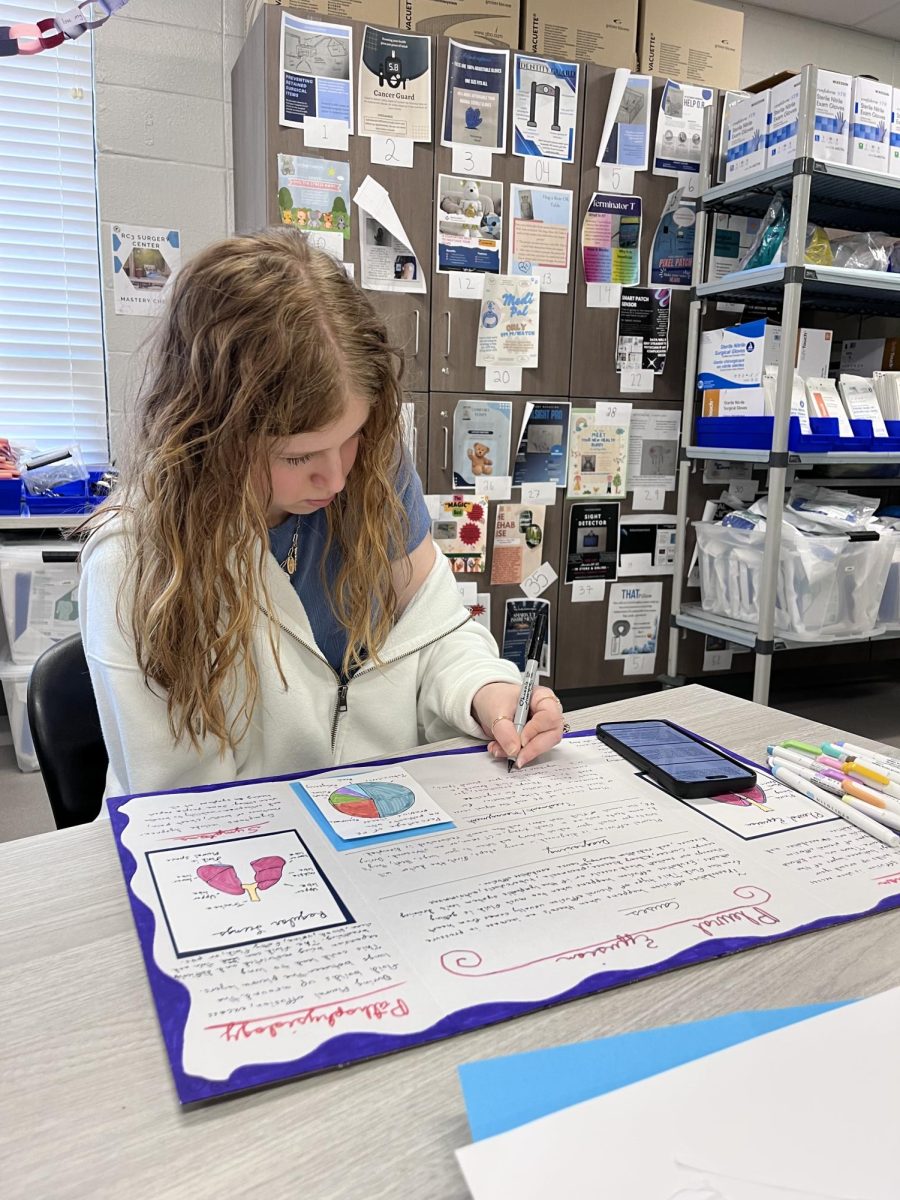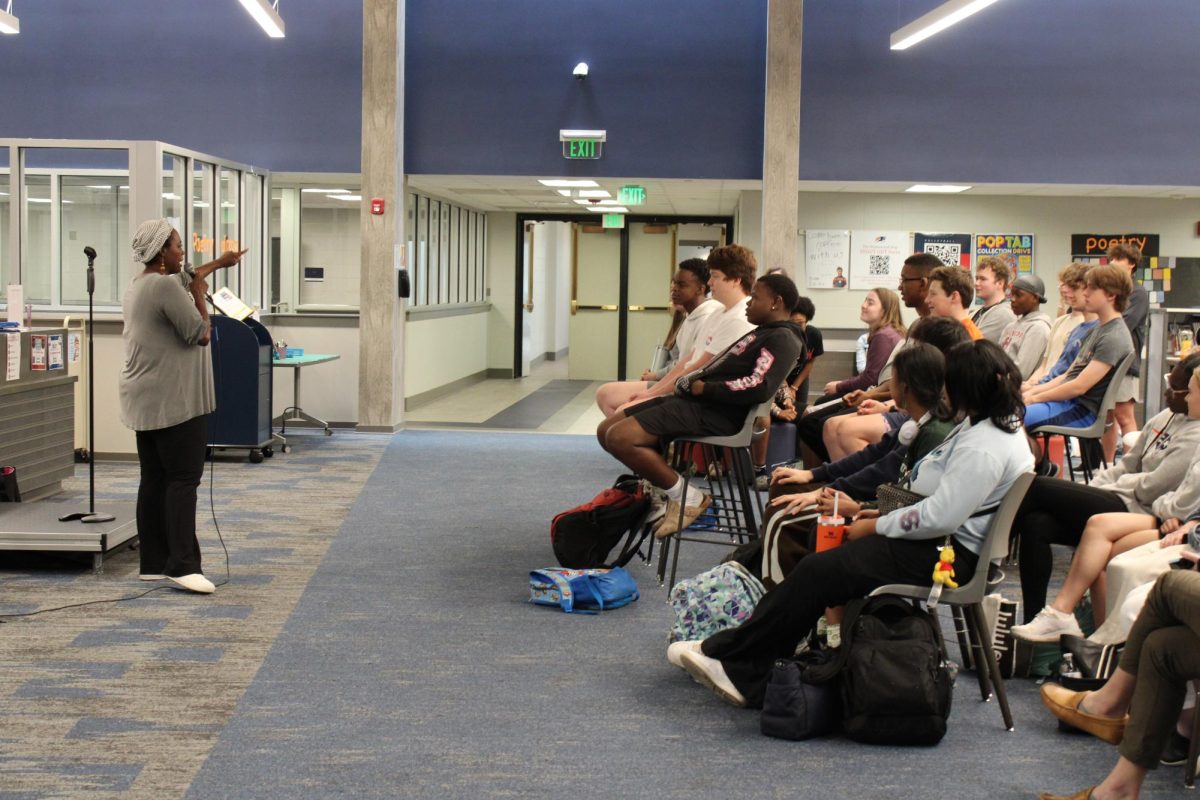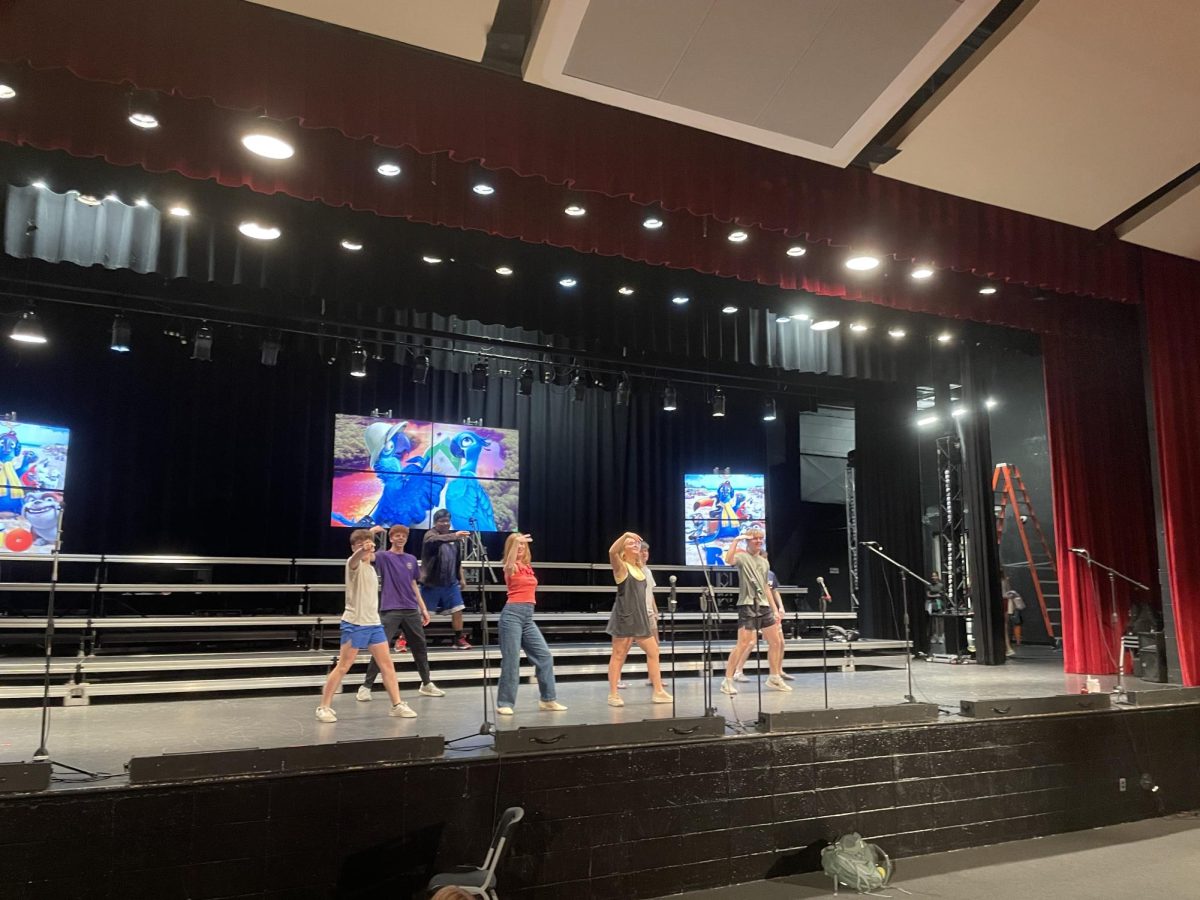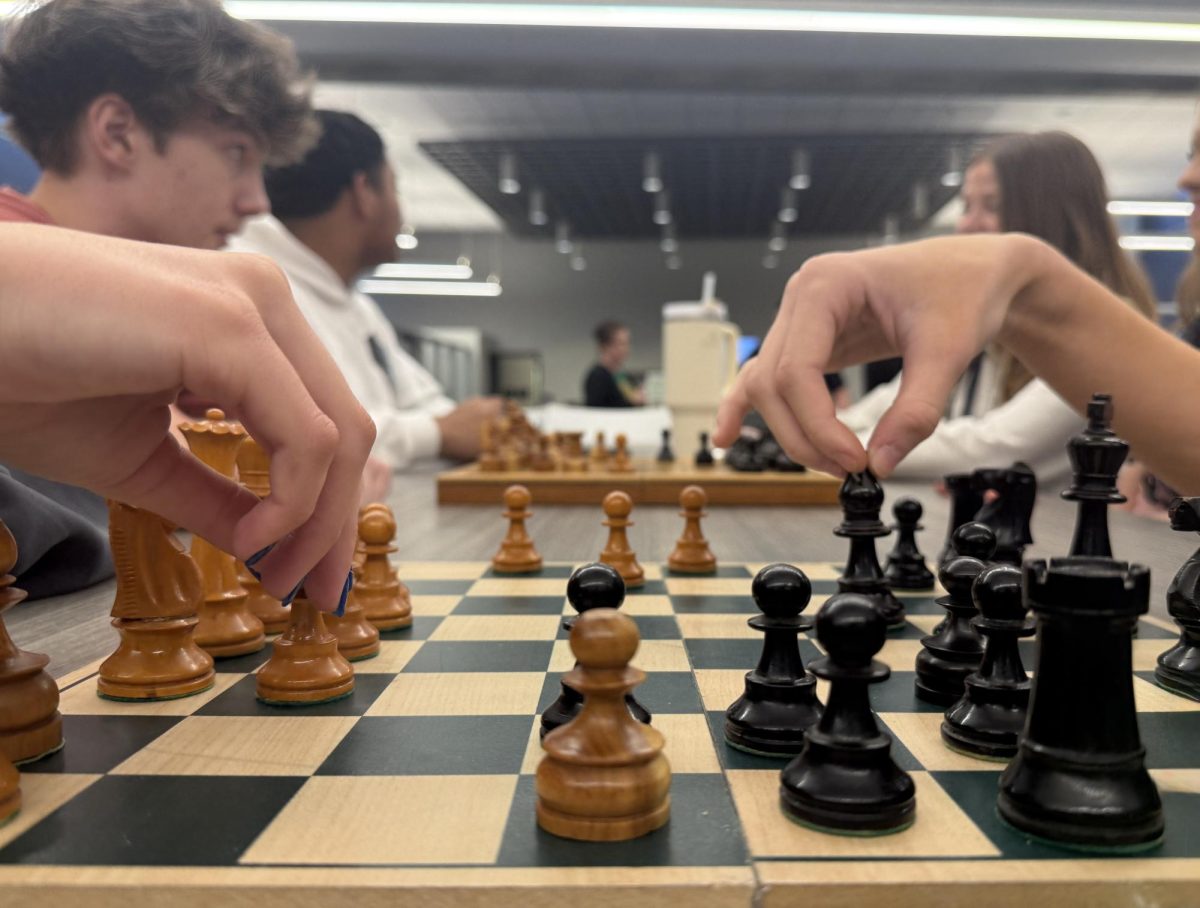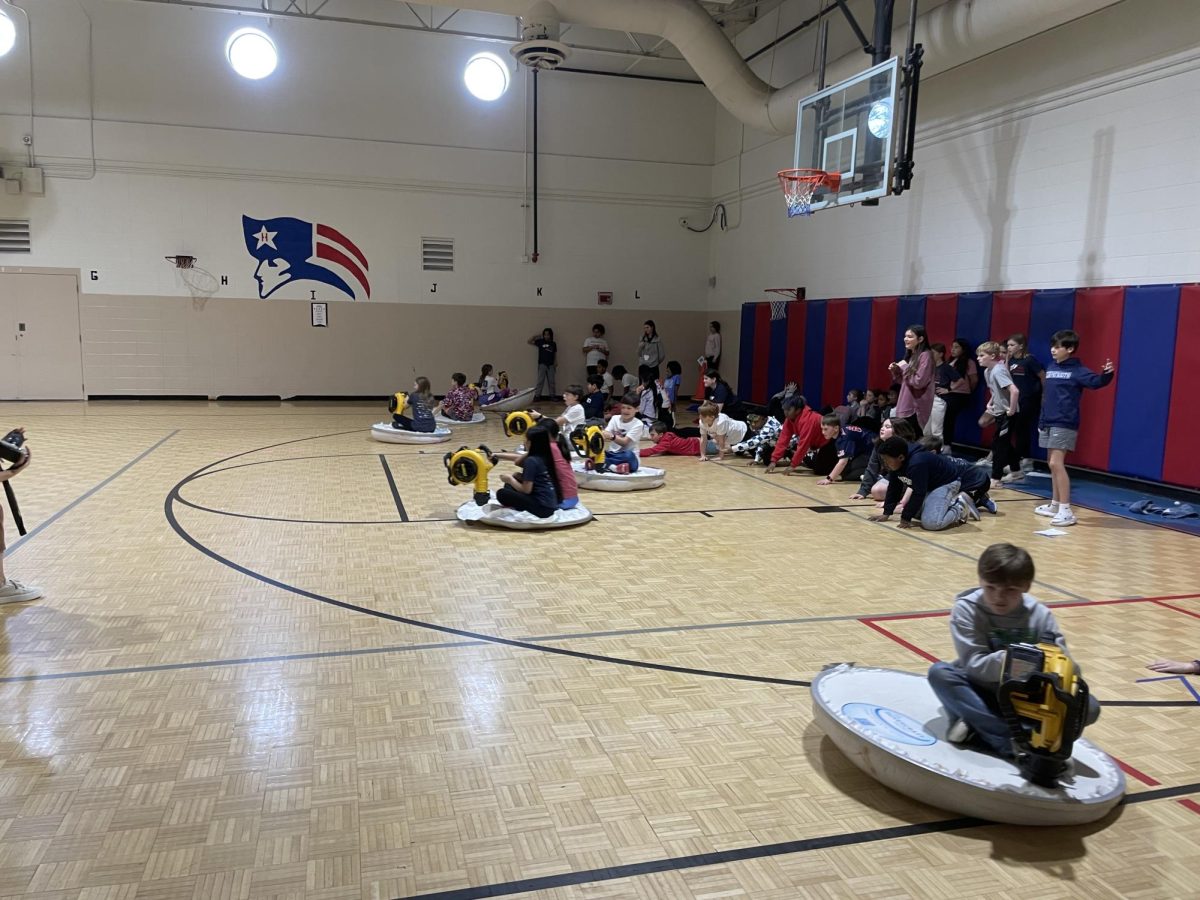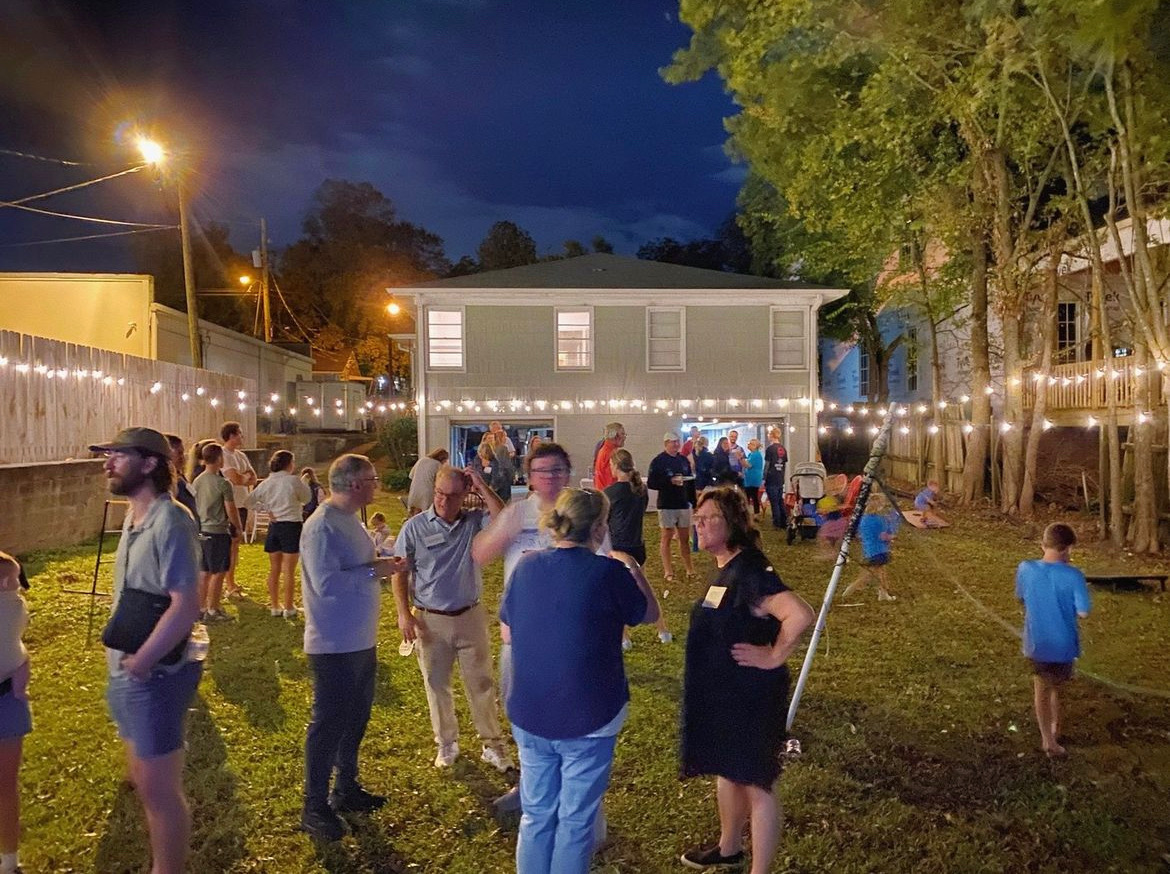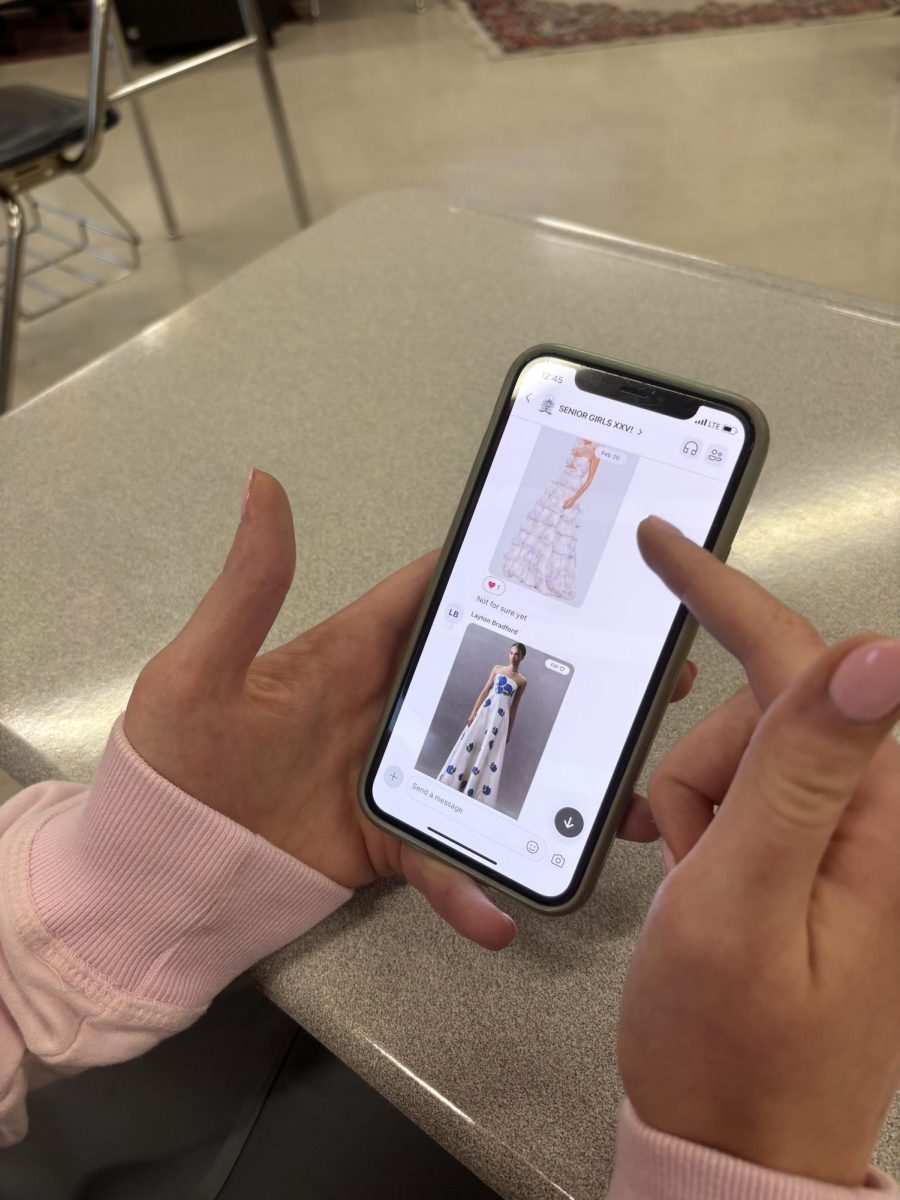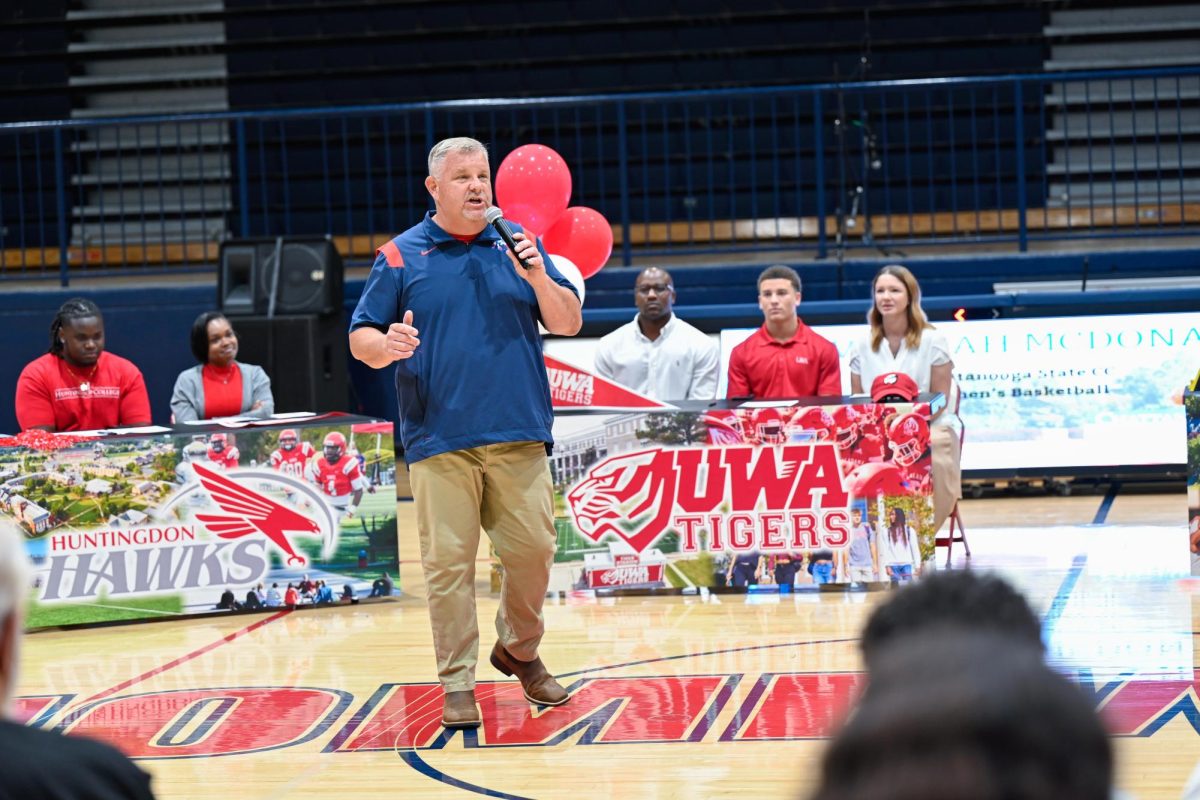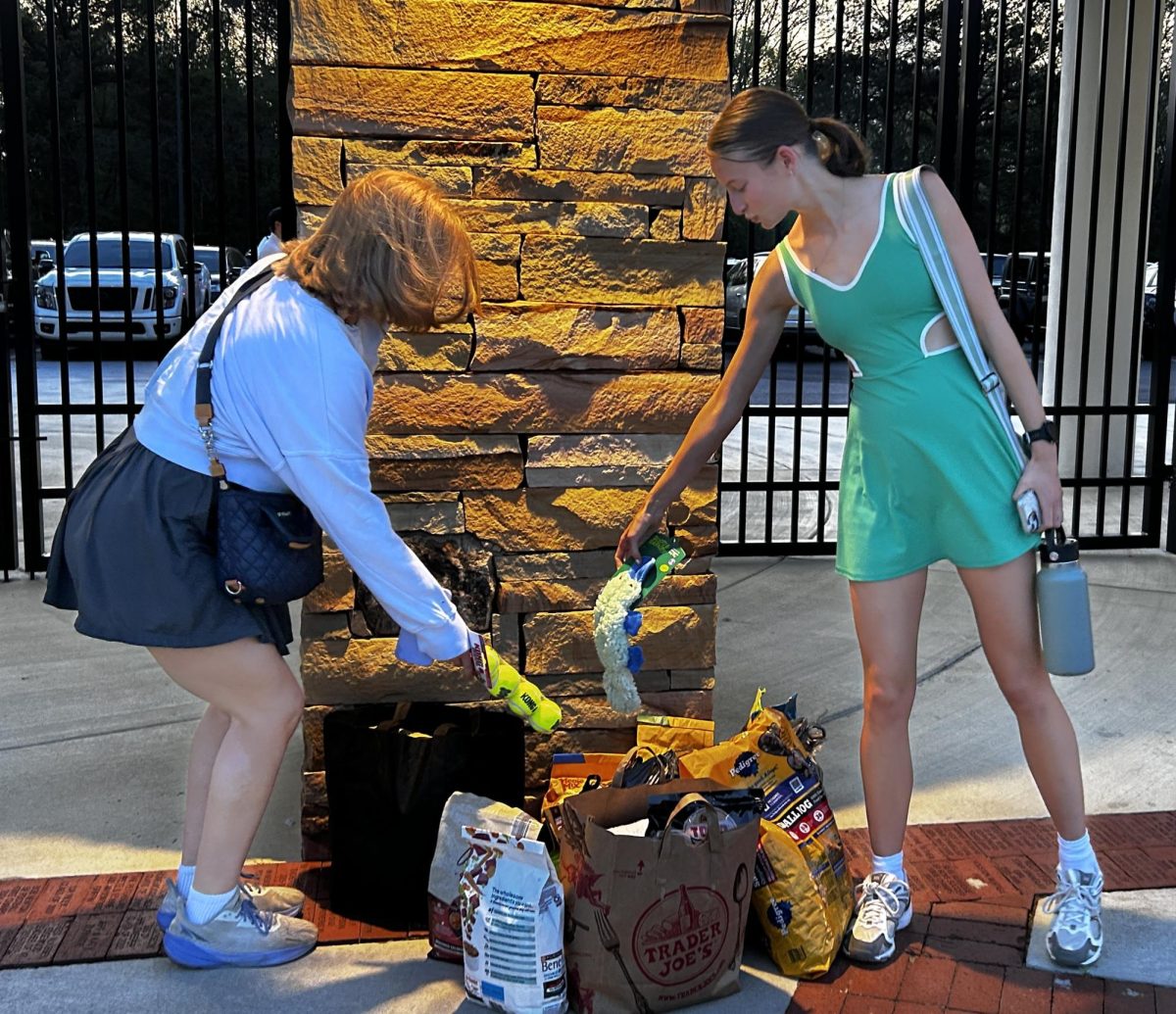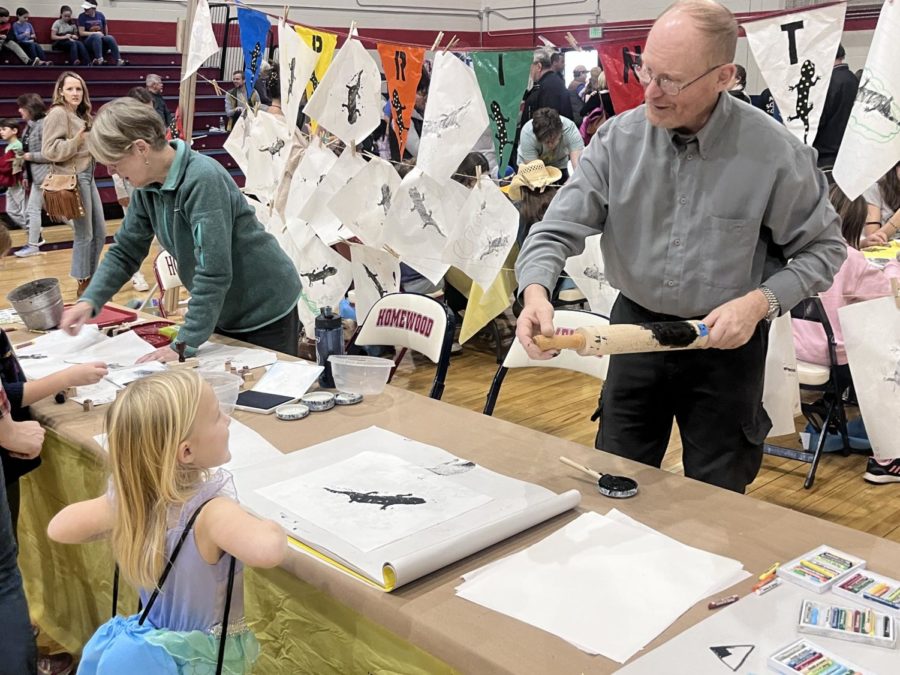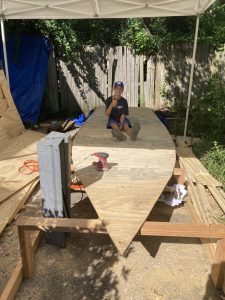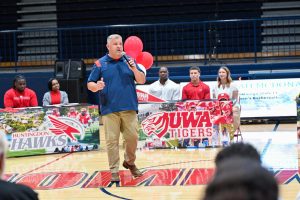Masses migrate to Salamander Festival
Kids and parents make salamander prints with ink, rolling pins and the help of volunteers.
January 31, 2023
Salamanders attracted hundreds of locals to Homewood High School this Saturday.
HHS’s Environmental club hosted the 19th annual Salamander Festival; dozens of reptiles, fish, and birds lined the walls of the school’s gymnasium, where kids could excitedly pet, hold, or gawk at these creatures and parents learned about the importance of local waterways and wildlife.
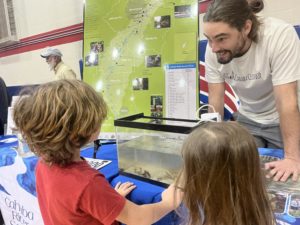
Each year when the first warm rain showers of winter fall, salamanders dash across S. Lakeshore Drive behind the high school to fulfill their breeding cycle in the wetlands.
Dr. Jim Brown, a history professor of 45 years at Samford University, was the first to notice this phenomenon and became very interested in the biological and environmental interworkings of Shades Creek, specifically the deciduous forest area surrounding S. Lakeshore Drive.
Brown contacted the president of the Friends of Shades Creek, Michelle Blackwood, who instantly took great interest in the Shades Creek salamanders.
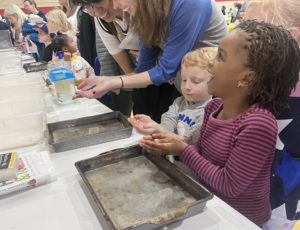
Blackwood organized a small event for environmentalists in Alabama and other board members from the Friends of Shades Creek to enjoy some games, listen to live music and talk about the ecology of the salamanders and other Alabama wildlife.
The following year, she and other watershed groups set up an event at Samford designed to educate and inform in a semi-professional, intellectual setting.
After struggling to pull a large audience during the busy fall months, the Friends of Shades Creek decided to move the event to January, aligning more with the salamander’s run and mating season.
Blackwood recognized the dreary winter days of January weren’t usually associated with nature and beauty in the same way as spring or summer. She wanted to reimagine people’s perception of nature and the health of local waterways to make it fun and engaging, so she created Salamander Festival.
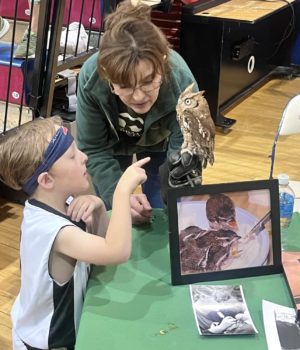
Nineteen years later, the festival goes on. The excitement felt by visitors from around Birmingham while looking at these slimy, rarely-seen creatures shows brightly on the faces of children and adults alike.
Helen Stewart, a sixth-grader at Homewood Middle School and volunteer with the Cahaba River Society, had the opportunity to hold a snake for the first time at the event and did so while confidently answering questions from parents and kids, such as, “Why does it curl up in a ball? Does it bite? What does it eat?”
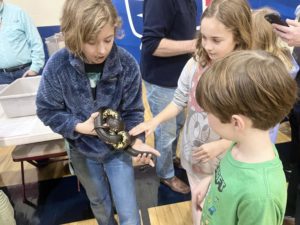
“I spend lots of time researching snakes and reptiles just for fun,” Stewart said. “My family hates snakes. I could never get one of my own, so they signed me up to volunteer.”
Kids at Salamander Festival dashed between crafting clay salamanders, making salamander ink prints, dancing to folksy music performed by Phil Vander Kamp and “The Swinging Slythereens,” learning about different aspects of creek conservation and, of course, holding salamanders.
Vickey Wheeler, a member of the board of directors of the Friends of Shade’s Creek, walked around the festival dressed as a giant salamander, painting salamander spots on the faces of eager children.
Wheeler explained the goal of the watershed groups from around the state is to make an event that brings awareness and
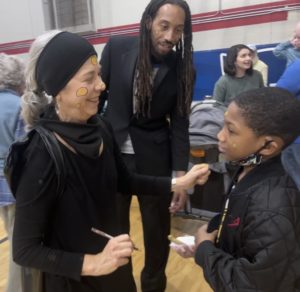
care for the cleanliness and health of not just Shade’s Creek and its salamanders but all waterways in Alabama that get mistreated.
“It’s about educating the community about why we should care,” Wheeler said.


